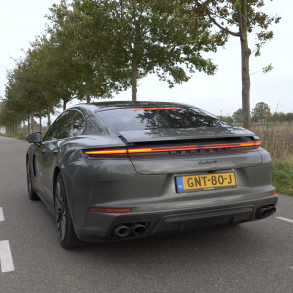(2010 – 2013) Porsche Panamera – Ultimate Guide
After more than half of the century, Porsche finally unveiled its four-door sedan.
At the 2009 Shanghai Auto Show, the German car-maker introduced its newest range: the Panamera range. It was the last piece of the puzzle. After the entry-model Boxster, the well-known 911, and the big SUV Cayenne, Porsche was ready to show its contender in the sport-sedan market. In the beginning, there was only the S, the 4S, and the Turbo versions. The base-model Panamera and Panamera 4 were introduced in 2010.
The Panamera’s headlights resembled those installed on the Cayenne. The profile resembled an elongated 911 or the 989 concept-car. On the front fenders, two vents were used to extract the air within the wheel-well and decrease the front-lift effect. In the back, the taillights resembled those found in the Cayman. In the back, on the trunk-lid, a retractable wing was installed. It was automatically extended at speeds over 120 kph (74.5 mph).
Inside, the Panamera designers took their inspiration from the Vertu luxury mobile phones. A four-seat layout was the only option, with a big center console that separated the driver from the other passengers. In the back, there was a decent room for adults and since it was a hatchback it could get an impressive amount of luggage. The dashboard was typical for a Porsche, with round dials and centrally-mounted tachometer.
The entry-level Panamera featured a 3.6-liter V6 engine carried-over from Audi. It was paired as standard to a 6-speed manual. A 7-speed PDK (dual-clutch) was on the options list.








